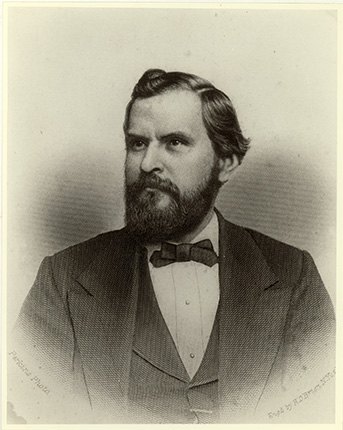 John Julian Chisolm is one of the most recognized names in both South Carolina and MUSC history. He was born in Charleston, SC in 1830 and graduated from the Medical College of South Carolina in 1850. Upon graduation, he further studied medicine in Paris and London. When he returned to Charleston in 1860, he became Professor of Surgery at the medical college, a position he held through the Civil War. After the war, Chisolm returned to Europe where he spent several years studying ophthalmology and otology. Focusing on those specialties, he returned to the United States and relocated to Baltimore, where he joined the faculty of the University of Maryland Medical School. He later became Dean and in 1873, took up the position of Professor of Diseases of the Eye and Ear - a position that he held until his resignation in 1896. Chisolm was also the founder of the Baltimore Eye and Ear Institute [1871] and a contributing founder of the Presbyterian Eye, Ear and Throat Charity Hospital [1877]. He died in 1903, in Petersburg Virginia.
John Julian Chisolm is one of the most recognized names in both South Carolina and MUSC history. He was born in Charleston, SC in 1830 and graduated from the Medical College of South Carolina in 1850. Upon graduation, he further studied medicine in Paris and London. When he returned to Charleston in 1860, he became Professor of Surgery at the medical college, a position he held through the Civil War. After the war, Chisolm returned to Europe where he spent several years studying ophthalmology and otology. Focusing on those specialties, he returned to the United States and relocated to Baltimore, where he joined the faculty of the University of Maryland Medical School. He later became Dean and in 1873, took up the position of Professor of Diseases of the Eye and Ear - a position that he held until his resignation in 1896. Chisolm was also the founder of the Baltimore Eye and Ear Institute [1871] and a contributing founder of the Presbyterian Eye, Ear and Throat Charity Hospital [1877]. He died in 1903, in Petersburg Virginia.
John Julian Chisolm is well-known for his innovations in battlefield medicine. He was given the first commission as a medical officer in the state of SC and was on hand to treat the wounded at Fort Sumter. The Civil War was most certainly a turning point for Chisolm and very much a catalyst for his most well-known, early innovations, namely, his book, A Manual of Military Surgery and the Chisolm Inhaler.
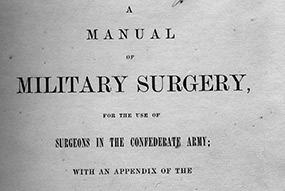
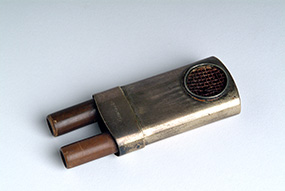

A Manual of Military Surgery
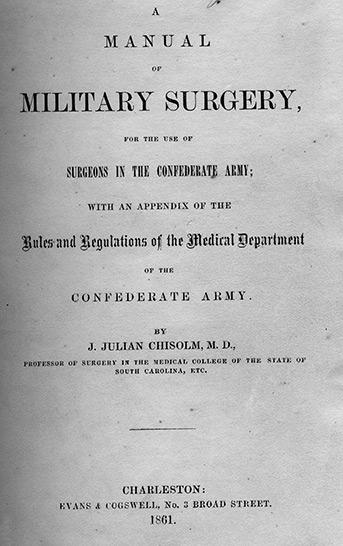
A Manual of Military Surgery was first published in 1861 and went through several different editions throughout the course of the Civil War. Most of the information presented in the book was gathered from Chisolm’s own observations of the Crimean conflict in Europe during the 1850’s. It is impossible to overestimate the worth of Chisolm’s treatise; it was one of the most important books of the Civil War era. Neither Union nor Confederates had much (if any) training in military medicine. When taking the brutality of warfare at that time into account, Chisolm’s Manual was an indispensible field guide for military medics.
Chisolm Inhaler
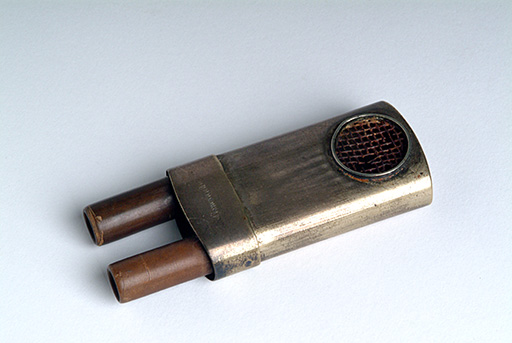
Somewhat related to the Manual is the Chisolm Inhaler. This instrument is primarily a chloroform economist. It was designed for more efficient use of chloroform in anesthesia – and Chislolm was a great advocate for the use of anesthesia in surgical procedures. Nostril tubes were attached to a cylinder with a grille set into it. Inside the cylinder a sponge or cloth was placed, onto which chloroform was dripped through the grille. The device was portable and easy to use, with the added benefit that surgeons and assistants were less likely to be affected, themselves, by the evaporation of the chloroform. The Chisolm Inhaler was particularly important in the context of the American Civil War, and especially from the point of view of the South when chloroform became a scarce commodity. Anything that made a supply last longer was an incredible advance in both medicine and humanitarianism.
Aside from conserving resources, the Chisolm Inhaler also did away with some of the more unpleasant aspects of anesthetization. Perhaps most significant among these, was the sensation of suffocation caused by the large, cone-shaped implements that were normally used and which fit over both nose and mouth.
“There are a great variety of chloroform inhalers; most of them are bulky, and made in such a way as to cover both the nose and the mouth. The chloroform being administered in a concentrated form, most frequently causes struggling on the part of the patient to escape the suffocative sensation of the concentrated ether. By the use of this simple apparatus the patient inhales through the nose alone; and should any of the annoying sensations about the throat be experienced, he can immediately relieve himself by opening his mouth.…’”
Not only did the Chisolm Inhaler lessen the unpleasant effects of being anesthetized, it also prevented the patient from struggling.
‘New Instruments’, The Medical Record, New York, Vol. 1. [n.d.], p. 508-509.
The rational treatment of cataract patients
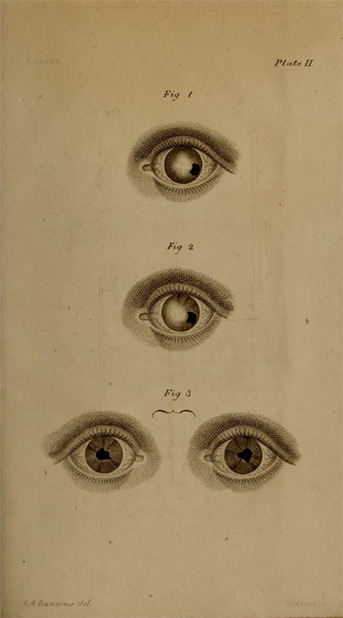
The last of Chisolm’s innovations that bear mention relates to the treatment of cataract patients. Chisolm was, in his own words a great advocate for, ‘The rational treatment of cataract patients’.
“I now can say, without reserve, that I have abandoned absolutely compresses, bandages, dark rooms and restraints from the after-treatment of cataract cases, and that my percent. of good results exceeds my former experience under the old method of compresses, bandages and dark rooms still too general in use, to the annoyance of both surgeon and patient.…’”
The rational treatment of cataract patients drastically expedited the recovery from cataract surgery, as well as prevented many of its negative side effects.
Chisolm, Julian J., ‘The After-Treatment of Cataract Cases…’, Read in the Section on Ophthalmology, Otology and Laryngology, at the Thirty-Eighth Annual Meeting of the American Medical Association., 1887, p. 40.
Illustration from: Gibson, Benjamin, “Practical observations on the formation of an artificial pupil, in several deranged states of the eye : to which are annexed, remarks on the extraction of soft cataracts, and those of the membraneous kind, through a puncture in the cornea : illustrated by plates”, Cadell and Davies, in the Strand, by J. Haddock, Warrington, London, 1811, Plate II, p. 152.
